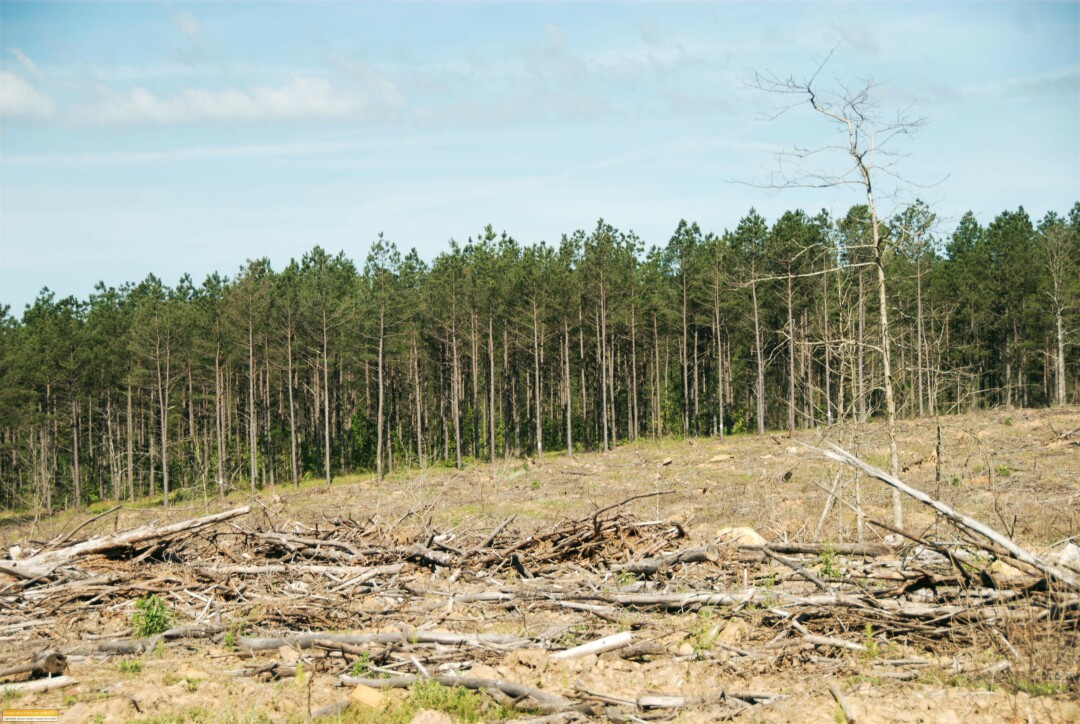Speaking for the forest

“We abuse land because we regard it as a commodity belonging to us. When we see land as a community to which we belong, we may begin to use it with love and respect.” Aldo Leopold
Last week I wrote about several alternatives to typical forest management practices. County and state foresters I have talked with claim they are using sustainable practices based on good science. They say they have certifications to prove it. But looking at the many acres of cut-over wasteland across Douglas and Bayfield counties, it is hard to give credence to their claims of sustainability.
Historically forestry departments have primarily served the logging industry. The emphasis was on timber production and “maximum sustainable yield” and not other sustainability goals. True sustainability is more than trees growing back. It involves maintaining the entire complex forest ecosystem, protecting all the species in the forest, and encouraging diversity, especially for mature old growth trees.
Logging in the Brule River State Forest (BRSF) fits the historic pattern. I wrote about this in 2016. Using their own data, it was obvious that their logging plan was not sustainable unless one used a narrow definition of sustainability. The BRSF “sustainable harvest” goal was 2% (about 1,000 acres) of the forest per year. This sounds small but forests grow over long time periods. Logging 1,000 acres per year in a 47,000 acre forest means most of the forest is cut in 40 years. Aspen stands are typically cut every 30-40 years. White pine, hemlock and maple take much longer than aspen to grow. Mature old growth forests take centuries to develop.
If all you want is aspen (which is currently the most numerous tree species) 2% logging works. If you want a diverse, multi-age, multi-species, healthy white pine forest, it doesn't work. Tree farms cutting every 30 to 40 years are not diverse, sustainable or healthy forests.
Logging impacts forests in other ways besides cutting the trees. It impacts the many other species living in the forests. We usually think about this for larger, useful or game species. But smaller species like fungi, bacteria, insects, song birds and under-story plants are also affected. Even the soil is negatively impacted by logging.
A recent study by the U.S Forest Service talks about the damage to soils from logging operations (“Soil Sustainability and Harvest Operations: A Review,” January 2021, fs.usda.gov/rm/pubs_series/rmrs/gtr/rmrs_gtr421.pdf). This study says, “Soil productivity is essential to the sustained production of forest ecosystem...Timber harvests can negatively impact soil and affect long-term productivity due to the use of heavy machinery and harvest operations which can compress the soil...” Soil compaction, “...can subsequently lead to a decrease in stand productivity or other ecosystem services (e.g., water storage, beneficial microbial diversity, carbon sequestration)...”
These days loggers are not lumberjacks. They are heavy equipment operators and their machines typically weigh about 60,000 pounds. A loaded semi-truck can weigh more. You don't have to be a scientist to see the damage done – just walk through a cut-over area.
Soil compaction and other disturbances (rutting, erosion and displacement of organic material) has impacts on the soil structure. Soil porosity is a measure of the open spaces between soil particles. The soil's physical, chemical and biological processes depend on pores allowing water and gases (oxygen and carbon dioxide) to move within the soil. The study says logging can reduce soil porosity by up to 60%. This can prevent roots from penetrating the soil and cause other problems.
Soil is the home of a wide array of soil organisms (bacteria, fungi, insects and worms). These organisms are the bottom of the food chain as well as being essential for maintaining the physical and chemical properties of the soil. They can help maintain soil porosity. But they also need sufficient soil porosity to live. Some of these organisms are essential for allowing the trees to use soil nutrients. Forests are a web of life and not just trees.
Soil compaction and porosity are not the whole story. Industrial logging strips the land of its natural surface organic layers. This cover of leaf litter, rotted wood, moss, lichens and fungi is called “duff.” It is the home for much of the biota discussed above. But it also has other important functions. Duff is the nursery for plant and tree seedlings. Duff absorbs water, which helps reduce flooding as well as helps the forest survive droughts. Logging not only tramples and disturbs duff, it opens up areas to wind and sun that dries out the soil and organic layers. This increases fire danger and potential erosion problems. Disturbed soil is more vulnerable to invasive plant species. You find no duff in industrial or “working” forests.
Foresters claim logging is good for wildlife. It creates “edge” and browse. But this is a very selective viewpoint for only some game species. In my observation logged areas root sprout and produce dense, impenetrable jungles of saplings that are largely unusable by any species for years into the future.
In the forest management plans for Douglas and Bayfield counties, and the BRSF, timber production is the first goal. The Douglas county website says, “The primary management activity performed by Douglas County forestry staff is the establishment of commercial timber sales.” The Bayfield land management plan states, “Optimizing the production of timber products through the sustainable management of the County Forest is one of the primary objectives of the Department.”
These plans do discuss protecting ecologically important areas and endangered species, providing recreation opportunities and encouraging diversity, but clearly these are secondary goals. A few acres are set aside for these other purposes but the vast majority is subject to logging. In the BRSF even the After Hours cross-country ski area has been logged.
Note that the emphasis in the study (and in the management practices of local forest mangers) is on soil and forest “productivity” and not the health of the forest ecosystem per se. This is what Aldo Leopold was taking about. Nature is more than a “commodity” for our exclusive use. It is part of the ecosystems to which we, and all life, belong. We need better, more comprehensive and more inclusive definitions of sustainability and better, less destructive logging practices.
